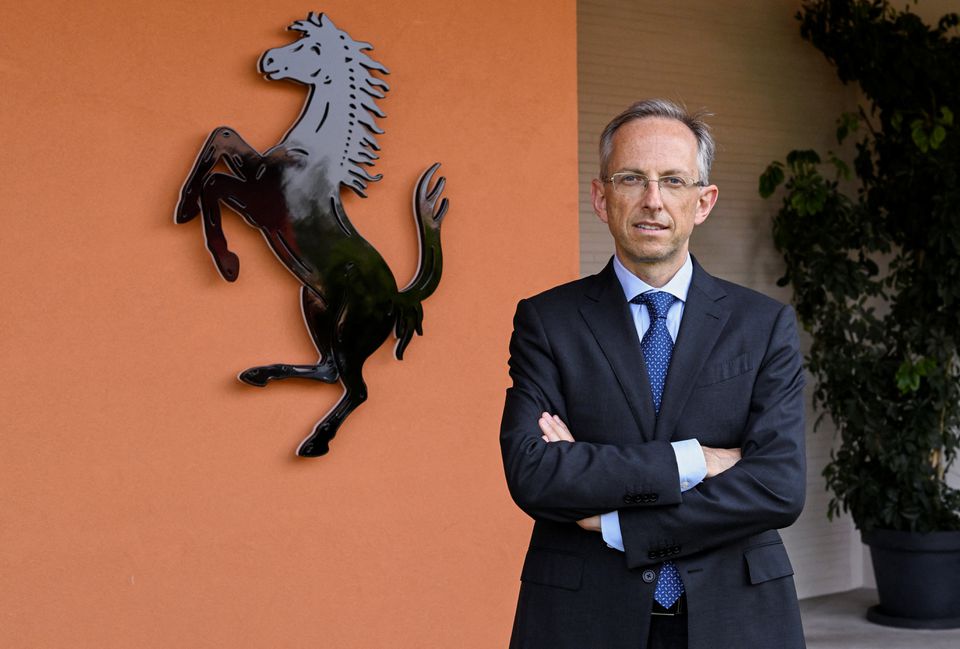MARANELLO, Italy, June 16 (Reuters) – Electric and hybrid models should make up 80% of Ferrari’s (RACE.MI) sales by 2030, the luxury carmaker told investors on Thursday, vowing to produce “even more unique” cars as it leans on partners to make the costly shift to zero-emission driving.
“Everything we do will always focus on being distinctively Ferrari,” chairman John Elkann said as the company unveiled its new business plan. Electrification “will allow us to make even more unique cars.”
To reduce investments, Ferrari will use suppliers for components or software that are not crucial, such as an operating system, Chief Executive Benedetto Vigna said.
Like other sports carmakers, Ferrari’s challenge goes beyond just investing in electric models to deliver high performance – today’s electric vehicle (EV) batteries cannot match combustion engine sports cars’ sustained power.
Like its rivals, Ferrari also sells an emotional experience to wealthy customers centred on the throaty roar of its powerful engines. As it goes electric, Ferrari must ensure its high-net worth customers and investors are along for the ride.
Standing out in the multitude of EVs coming to market that can all accelerate quickly could be tough for the Italian carmaker, whose cars start at around 210,000 euros ($219,282.00).
In the meantime, Ferrari will unveil its first ever sport-utility vehicle – powered by its gas-guzzling trademark 12-cylinder engine – this September.
Vigna confirmed Ferrari will launch its first electric model in 2025, one of 15 new models between 2023 and 2026.
Ferrari expects fully-electric cars will make up 5% of sales in 2025 and 40% in 2030. Hybrid models should rise to 55% of sales in 2025 from 20% in 2021, before dropping to 40% in 2030.
Vigna said Ferrari would develop its own electric motors, inverters and battery modules on a new assembly line at its plant in Maranello, Italy, while outsourcing non-core components.
To save money Ferrari will not develop an operating system for EVs. In contrast, other automakers, including Tesla (TSLA.O) and Mercedes (MBGn.DE), say proprietary operating systems to run cars, manage wireless upgrades and collect data on driver habits and preferences are crucial.
“I will never build a Ferrari operating system, I would be foolish,” Vigna told investors. “You have to focus on the areas where you can be the best.”
Ferrari is working with four partners in Europe and Asia on battery components to research the next generation of high energy density solid state batteries.
Ferrari said it will invest 4.4 billion euros by 2026, while delivering core earnings of 2.5-2.7 billion euros by that year. Ferrari’s current guidance for 2022 is for adjusted core earnings of 1.65-1.70 billion euros.
The carmaker expects cumulated free cash flow of 4.6-4.9 billion euros from 2022 to 2026.
In a client note Kepler Cheuvreux analyst Thomas Besson said Ferrari’s financial forecasts sent a “clear bullish signal,” yet noted executives avoided questions about production volumes.
“But the direction is clear,” Besson wrote. “Electrification is required but will not change the DNA of the company and its products.”
($1 = 0.9577 euros)











